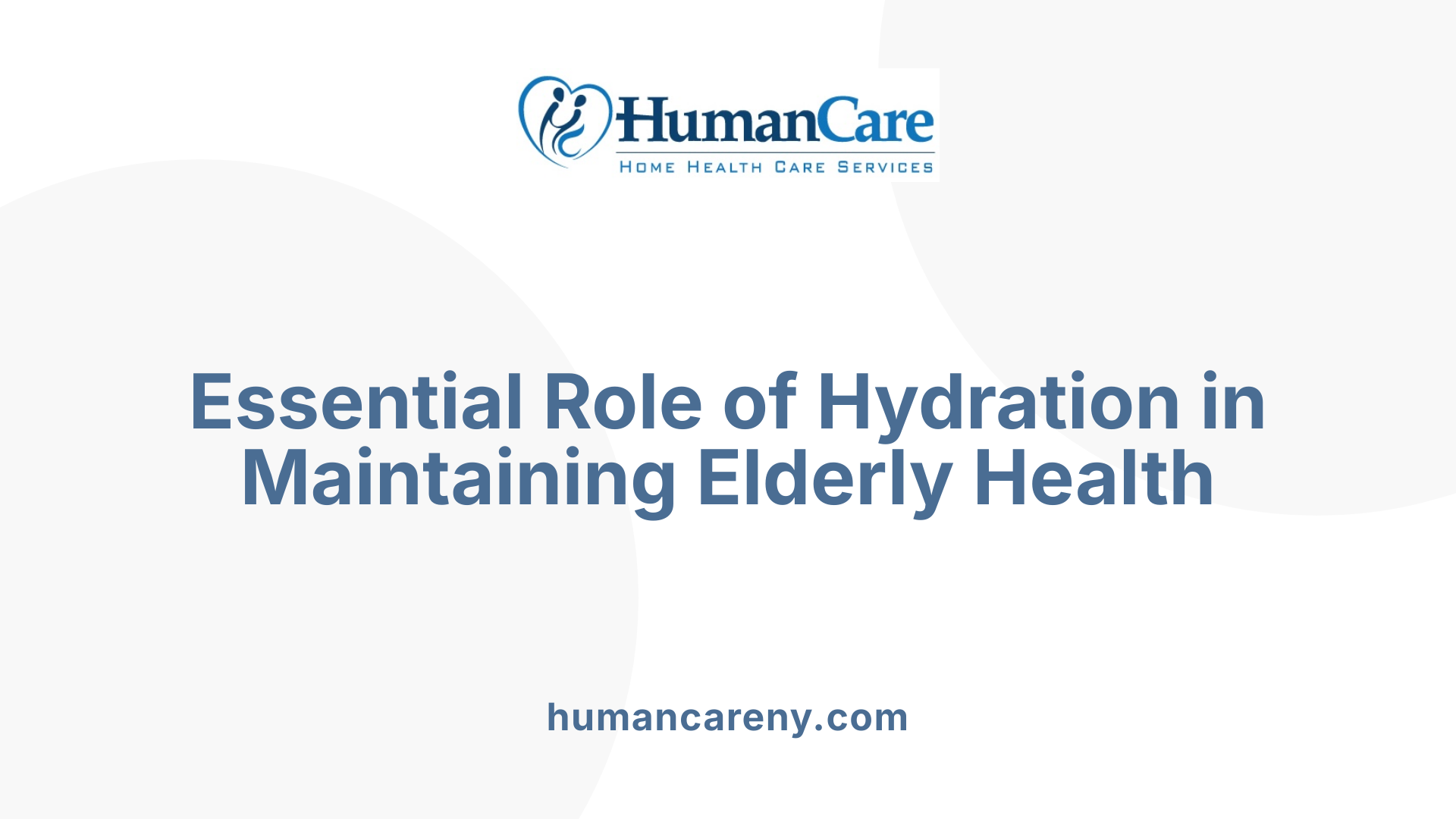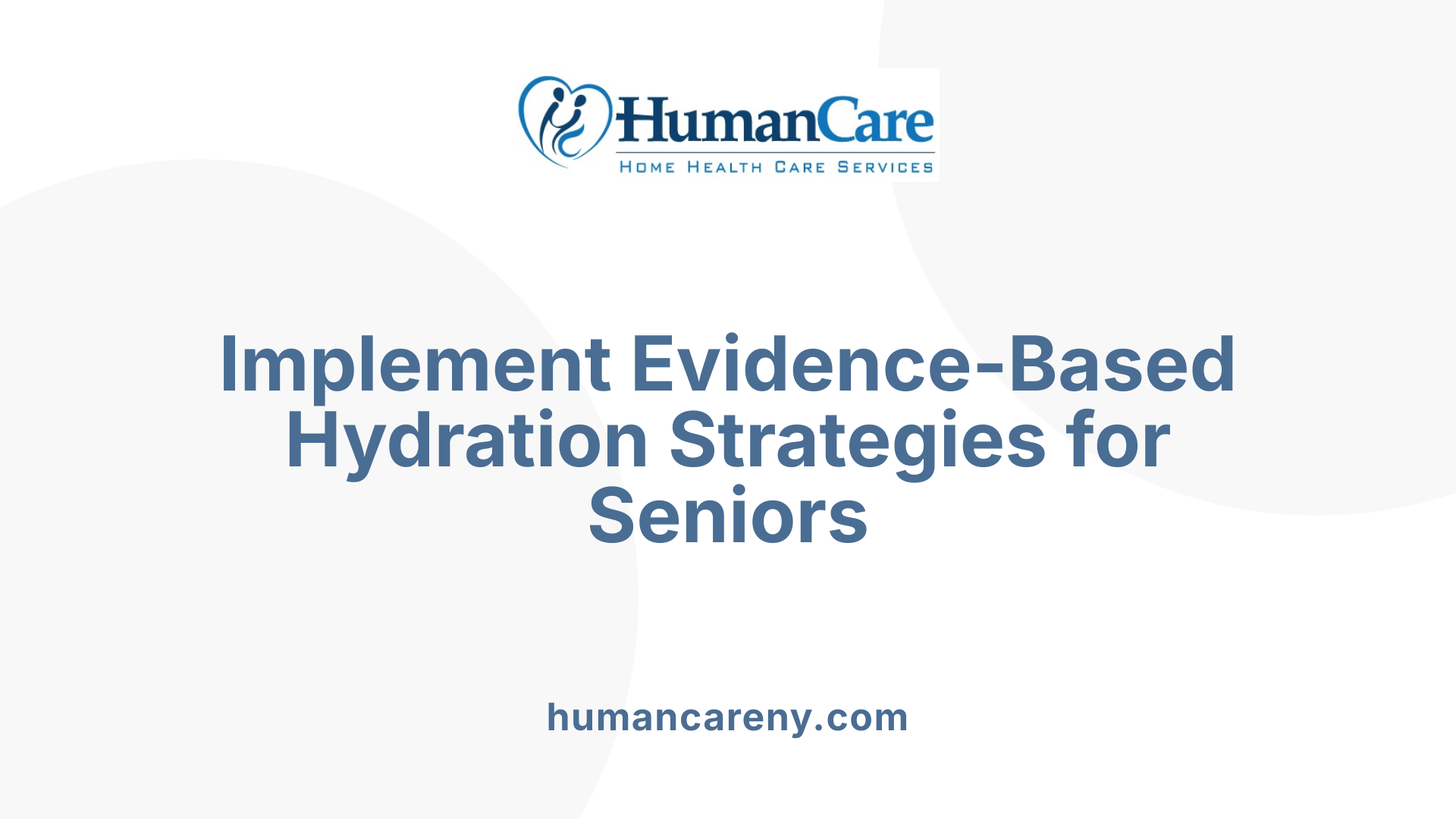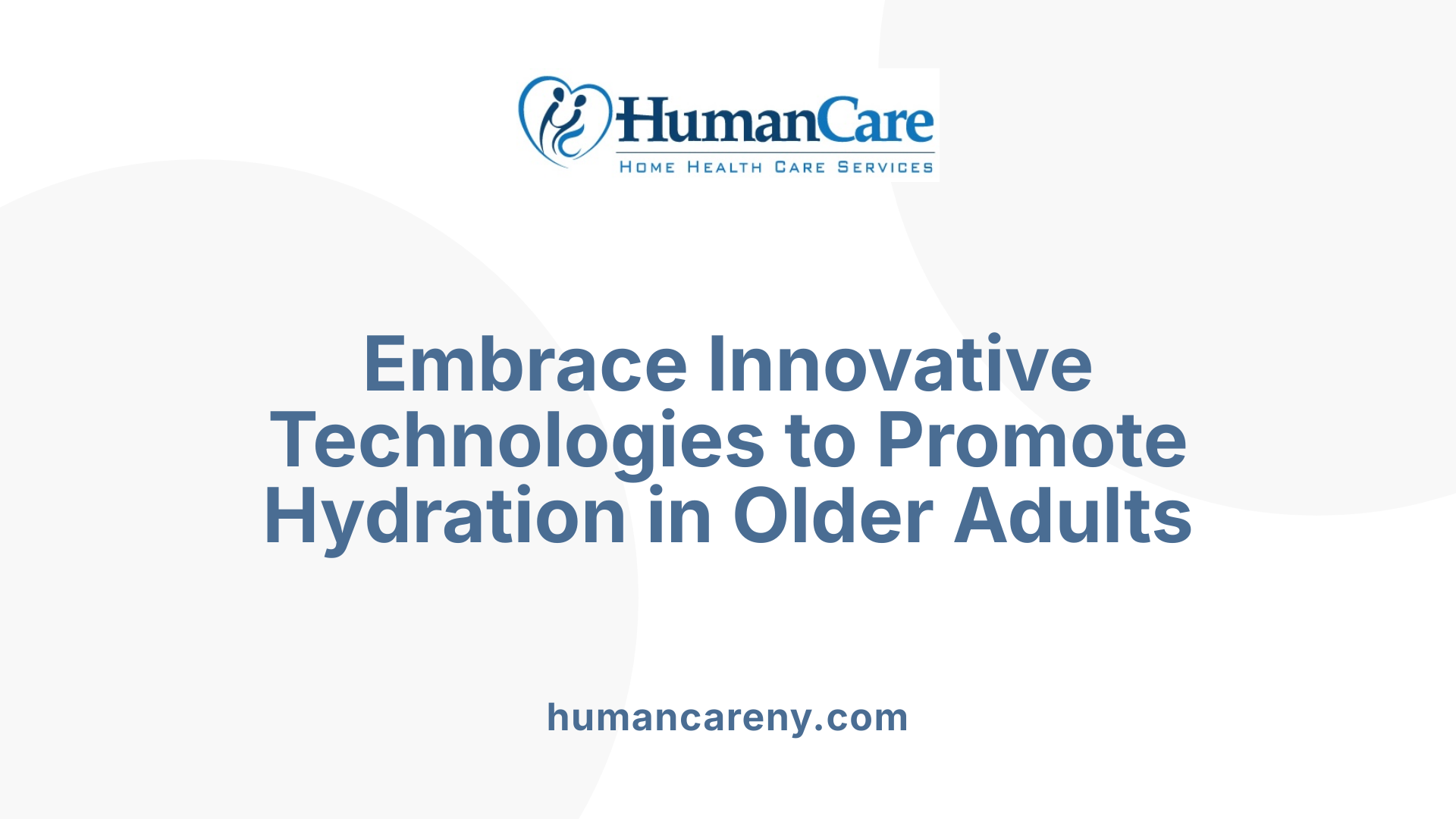The Critical Role of Hydration in Aging Populations
Proper hydration is vital for maintaining health and functionality in older adults. As aging brings physiological changes such as diminished thirst sensation, decreased kidney function, and mobility challenges, seniors become increasingly vulnerable to dehydration — a condition linked to numerous serious health issues. Homemaking services are uniquely positioned to support hydration strategies that improve health outcomes and quality of life for elderly individuals, combining personalized care, education, and practical assistance.
Understanding the Significance of Hydration in Elderly Health

Why is hydration important for elderly health and how do homemaking services contribute to it?
Proper hydration is vital for maintaining many essential bodily functions in seniors. It helps support kidney health, sustain cognitive functions, preserve skin elasticity, and regulate blood pressure. As people age, these processes tend to weaken, making adequate water intake even more important.
Older adults are more prone to dehydration because of physiological changes such as a diminished thirst sensation, lower kidney function, reduced muscle mass (less water storage), and the side effects of various medications. These factors increase the risk of dehydration-related complications like infections, kidney problems, cognitive decline, falls, and even hospitalization.
Homemaking services are instrumental in addressing these challenges. Caregivers can monitor fluid intake, encourage seniors to drink regularly, and assist with mobility issues that might hinder access to water or fluids. They also help create personalized hydration plans tailored to individual health needs.
Educational efforts by homemaking services play a key role—informing seniors and their families about the importance of consistent hydration. They might incorporate strategies such as offering flavored or infused waters, high-water-content foods like fruits and vegetables, or setting reminders for regular drinking.
By fostering routines and providing supportive environments, homemaking services significantly contribute to preventing dehydration. This proactive approach reduces health risks, maintains overall well-being, and enhances the quality of life for elderly individuals.
Strategies and Interventions to Promote Adequate Hydration
What are effective strategies to improve hydration for elderly individuals in care settings?
Enhancing hydration among older adults in care environments requires a combination of practical routines and organizational support. Implementing consistent hydration routines, such as offering fluids at regular intervals and during meals, helps establish habits that can be maintained over time.
Visual and verbal prompts are powerful tools to encourage fluid intake. Caregivers can use reminders, signs, or cues to prompt residents to drink regularly. Technology, like automated alerts or reminder systems on tablets or smartphones, can further support these efforts.
Providing accessible, user-friendly drinking vessels, such as cups with handles and straws, can make drinking easier for residents with mobility or cognitive challenges. Caregivers should also assist residents in drinking when needed and encourage the consumption of water-rich foods, including fruits like watermelon and strawberries, as they naturally contribute to hydration.
Creating a positive, choice-oriented environment makes a difference. Offering a variety of appealing beverages—herbal teas, flavored water, or cool drinks—can motivate elderly individuals to drink more. Reducing barriers such as dehydration-inducing beverages like alcohol and soda is also important.
Organizational leadership plays a crucial role. Training staff, establishing hydration policies, and fostering teamwork ensure consistent implementation of hydration strategies. When care teams collaborate, they can monitor intake diligently, address individual needs, and sustain hydration efforts.
Research shows that such multi-faceted interventions not only increase daily fluid intake but also help prevent dehydration-related health issues, like falls, confusion, or urinary infections. Promoting a culture of hydration within care settings supports better health outcomes for elderly residents.
Role of Homemaking Services in Supporting Hydration
Homemaking services play a vital role in helping older adults maintain proper hydration levels. They tailor personalized hydration plans that establish regular routines, encouraging seniors to drink fluids consistently throughout the day. These services also boost accessibility by placing water and other hydrating beverages in visible, easy-to-reach locations, simplifying the process of staying hydrated.
To make hydration appealing, homemakers often offer a variety of engaging fluids such as flavored water, herbal teas, or high-water-content foods like fruits and soups. These options help seniors enjoy their fluids more and reduce the likelihood of dehydration.
Monitoring hydration status is another crucial aspect. Homemakers observe signs like urine color, frequency of urination, and overall well-being. Using tools like hydration journals or checklists, they can track intake and identify potential concerns early. This attentive approach allows for timely intervention and adjustment of hydration strategies.
Incorporating technology, such as reminder apps or hydration tracking devices, further supports seniors in reaching their hydration goals. These tools provide visual or auditory prompts, making it easier for elderly individuals to remember to hydrate regularly.
Creating social routines around drinking—such as shared hydration times or engaging activities—can make the process enjoyable and motivating. Addressing individual preferences and barriers, including fears related to incontinence or mobility challenges, ensures that hydration efforts are effective and patient-centered.
Overall, homemaking services employ a multifaceted approach—combining personalized plans, environmental modifications, monitoring, and technology—to sustain adequate hydration, thereby enhancing health, preventing dehydration-related complications, and promoting overall well-being among older adults.
Evidence-Based Practices for Optimal Hydration Management

What are evidence-based practices for improving hydration in elderly care?
Enhancing hydration among older adults relies on implementing practical and scientifically supported strategies. Behavioral interventions are central to these efforts. Verbal prompts and encouragements, such as caregivers reminding seniors regularly to drink, can significantly boost fluid intake, with studies showing an increase of about 300 mL daily.
Offering diverse and appealing drink options also encourages better hydration. Including flavored waters, herbal teas, and offering fluids at preferred temperatures are effective ways to make drinking more attractive.
Objective assessment of hydration status helps in early detection and management of dehydration. Laboratory tests measuring serum or plasma osmolality are reliable, with levels above 300 mOsm/kg indicating dehydration. However, clinical evaluation—looking at symptoms like dry mouth, dark urine, and dizziness—remains an essential part of routine checks.
Environmental and organizational changes further support hydration goals. Making fluids easily accessible by placing water stations strategically, using hydration rounds, and providing hydration stations during activities makes it easier for seniors to drink regularly.
Education is vital for both staff and caregivers. Training healthcare providers on the importance of hydration, recognizing dehydration signs, and implementing hydration protocols can lead to more consistent practices. Creating systematic routines, such as fluid charts and hydration schedules, helps ensure everyone is engaged in maintaining adequate intake.
Multifaceted interventions combining these elements have proven successful. For instance, hospitals implementing bedside hydration charts, staff training, and regular hydration rounds have seen marked increases in fluid consumption among residents.
In summary, effective hydration strategies are personalized and involve multiple approaches. Systematic protocols, staff training, assessment tools, and environmental modifications collectively foster the maintenance of proper hydration, thereby improving health outcomes in older adults, especially during vulnerable periods like heatwaves or illness.
Assessment of Hydration Status in Older Adults
How can caregivers assess hydration status in elderly individuals?
Assessing hydration in older adults requires a comprehensive approach, as relying solely on physical signs can be misleading. Biochemical markers are essential tools; serum osmolality and serum sodium levels provide critical information. A serum osmolality of around 300 mOsm/kg is often used as a threshold for dehydration, with higher values indicating a higher likelihood.
In addition to blood tests, ultrasonography of the inferior vena cava (IVC) is emerging as a valuable diagnostic modality. This imaging technique allows clinicians to measure the IVC diameter and collapsibility, offering high-accuracy data to evaluate volume status.
Clinical signs, such as dry mouth, dark urine, or decreased skin turgor, are frequently present but are not sufficiently sensitive or specific, especially in the elderly with cognitive or physical impairments. Therefore, these signs should be complemented with objective diagnostics.
A thorough patient or caregiver history remains important. Questions about recent water intake, medication changes, or illness can help contextualize laboratory and ultrasound findings.
The optimal assessment involves combining biochemical data, ultrasonography, and history. This integrated approach helps accurately diagnose dehydration, facilitating timely and appropriate intervention.
Summary Table
| Method | Purpose | Advantages | Limitations |
|---|---|---|---|
| Serum osmolality | Biochemical indicator of hydration | High sensitivity; straightforward blood test | Requires blood draw; may be affected by other conditions |
| Serum sodium | Electrolyte balance monitoring | Readily available; easy to measure | Affected by many factors; less specific |
| Ultrasonography of IVC | Imaging of fluid volume | High accuracy; non-invasive | Requires trained operator; availability varies |
| History and clinical signs | Initial screening | Easy; cost-effective | Low sensitivity; subjective |
Integrating these methods provides a robust assessment framework, essential for ensuring proper hydration management among the elderly.
Concluding Remarks: Promoting Elderly Hydration for Better Outcomes

The importance of a comprehensive, individualized approach.
Ensuring adequate hydration for older adults requires a tailored strategy that considers each individual’s health status, preferences, and specific risks. Because aging leads to diminished thirst sensation, changes in body composition, and potential medication effects, hydration plans should be personalized. Healthcare providers should regularly assess hydration levels, incorporate water-rich foods, and adjust fluid goals based on individual needs.
The role of caregivers, healthcare providers, and organizations.
Caregivers and healthcare teams play a central role in promoting hydration by offering regular fluids, monitoring intake, and providing education. Organizations such as care homes and community health programs can implement hydration protocols, training, and environmental modifications like accessible water stations. Utilizing reminders, visual cues, and personalized hydration aids further support consistent fluid consumption.
Benefits of sustained hydration support.
Maintaining good hydration levels helps prevent dehydration symptoms like confusion, falls, and urinary infections. It also supports organ health, enhances mood, and may reduce long-term health complications. Studies show that hydration programs that involve education and routine adjustments can lead to lasting improvements in water intake habits, ultimately improving quality of life and reducing morbidity.
Continued research and innovation.
Ongoing research focuses on developing technological aids, such as smart reminders and monitor systems, to better track and encourage fluid intake among seniors. Innovative interventions, including flavor-infused water or personalized hydration schedules, aim to make drinking fluids more appealing. Future studies should explore cost-effective, scalable models to embed hydration support deeply within elder care practices, ensuring sustained health benefits.
Fostering Better Health Through Hydration Support
Ensuring proper hydration in elderly populations requires a collaborative effort involving homemaking services, caregivers, healthcare professionals, and organizations. Personalized hydration plans, routine monitoring, and education are fundamental tools that, when combined, significantly reduce dehydration risks and enhance overall health. Emphasizing evidence-based practices and adopting innovative strategies will further support elderly well-being, ultimately leading to a healthier, more engaged aging population. Ongoing research to optimize hydration interventions remains essential, while the integration of technology and community support can harness new opportunities to sustain hydration and improve outcomes for seniors.
References
- How to Stay Hydrated: A Guide for Older Adults
- Health Promotion and Hydration: A Systematic Review About ...
- Hydration Tips for Older Adults | Right at Home In-Home Senior Care
- Improving hydration of care home residents by increasing choice ...
- Make Sure Seniors Get Enough Water by Keeping Them Hydrated
- 4 Hydration Tips for Older Adults | Home Health Care
- Hydration and older adults: Why water matters more as you age
- [PDF] Guidelines to Effective Hydration in Aged Care Facilities
- Hydration Status in Older Adults: Current Knowledge and Future ...



